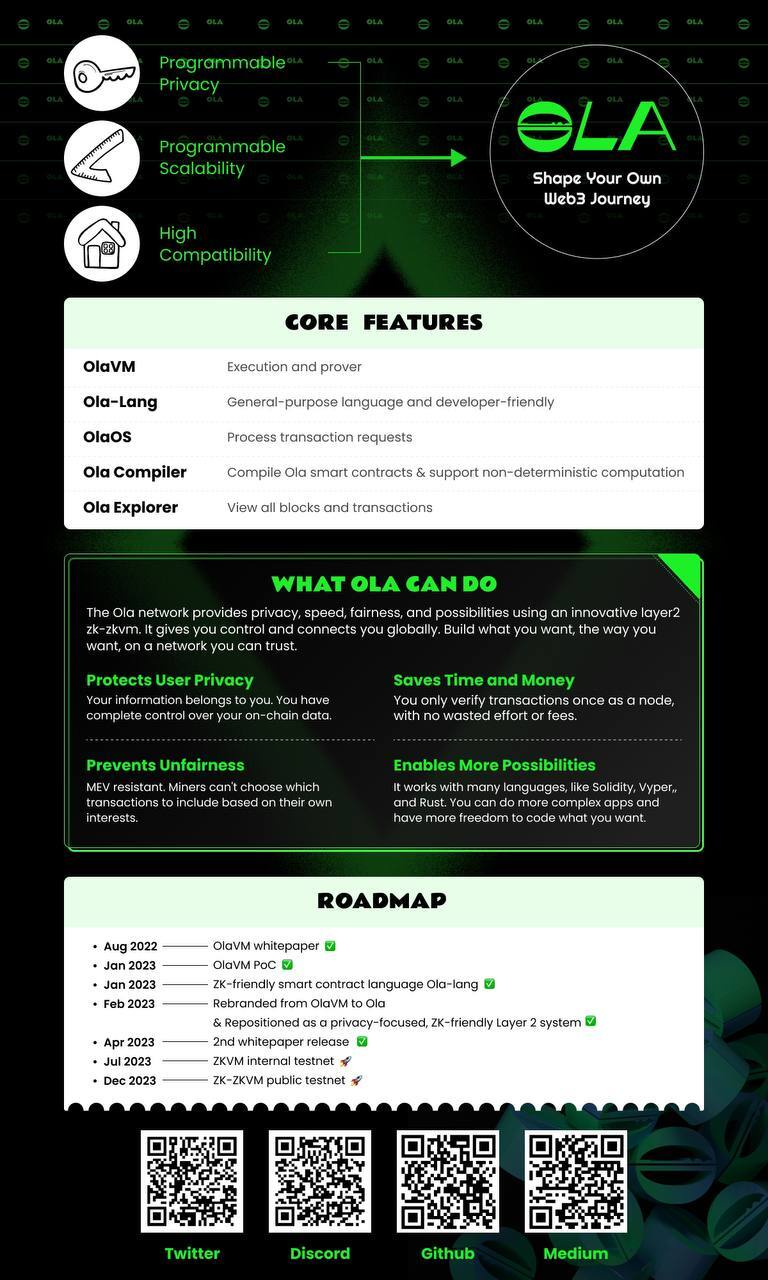Blockchain technology has been gaining popularity in recent years due to its decentralized nature and the ability to secure transactions without the need for trust in third parties. However, one of the major challenges faced by blockchain is privacy.
The public nature of transactions on the blockchain means that anyone can see the details of a transaction, including the sender and receiver addresses, transaction amounts, and other information. This lack of privacy has made it difficult for blockchain to be used in certain applications where privacy is crucial.
SponsoredProgrammable Privacy platform by Ola
Ola is a Programmable Privacy platform based on Layer 2 and ZK-ZKVM, designed to bring controllable, optional privacy to Ethereum. Ola is a platform built by Sin7y Labs in 2022.
Ola aims to address the privacy challenges faced by blockchain by implementing a robust key management system, a UTXO-like account structure, and a constraint logic other than proof of programmability. Ola’s privacy design focuses on two aspects of user privacy: Identity Privacy and Data Privacy.
Ola’s key features include a General-Purpose Smart Contract Language based on the Instruction Set Architecture (ISA) for better programmability. The programmability in Ola is achieved using ZKVM, which allows for a higher level of language abstraction and programmability than DSL.
Ola aims to achieve the fastest ZKVM by utilizing a register-based VM design, an Algebraic RISC Instruction Set Architecture, and other techniques.
Find the specific technical details in the whitepaper here.
One of the unique features of Ola is its team of cryptography experts. The majority of Ola’s team members are experts in the field of cryptography, with many of them having published technical reviews and industrial insights on zk algorithms.
This expertise allows Ola to stay at the forefront of innovation in the blockchain space, ensuring that its platform remains up-to-date and secure.
Sponsored SponsoredNew whitepaper
The project has just released its second whitepaper. The whitepaper discusses the design and construction of Ola’s high-performance ZKVM. Additionally, it includes information on the development of Ola-lang, a Zero-Knowledge-friendly smart contract language, and the privacy design architecture.
The updated edition also delves into Ola’s flexible data sharing and user data ownership, developer-friendly language and tool suites, and better language scalability.
You can click here for more details about Ola’s mission to achieve more in web3 and its new whitepaper.

How privacy is achieved
Ola adopts a UTXO-like model for privacy, where to protect the sender’s address information, Ola uses a one-time signature and one-time address. Ola’s view key can be updated once it has been exposed to ensure privacy.
Ola utilizes a Note-based account structure to hide transaction sender and receiver information.
Constraint logic is required to ensure the computational integrity of the commitment, effectiveness of the commitment, computational integrity of the Note Nullifier, the validity of the signature, computational integrity of one-time addresses, and the generated note.
Ola uses proof of programmability, including off-chain computation and proof of public function (Account-based) and off-chain computation and proof of private function (Note-based).
Did you know?
Future benefits of the Ola platform
Ola aims to bring Programmable Privacy through its ZK-ZKVM platform. Benefits for developers include the ability to deploy public contracts, privacy contracts, and ordinary contracts. Benefits for users include the ability to choose transaction types for ordinary contracts freely and asset transfers between public and private accounts.
The project plans to release the programmable privacy public testnet in Q4 2023 and welcomes developers and users to contribute to the community.
Ola’s focus on privacy makes it a promising platform for various applications, including contract deployment and data control. With the launch of Ola’s public testnet, it will be interesting to see how it is adopted and used in the Ethereum ecosystem.

